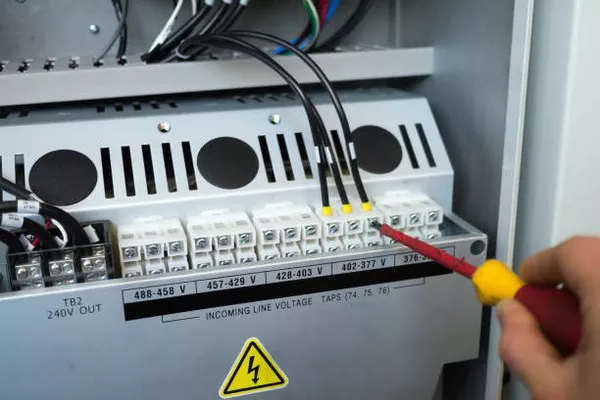In the realm of electricity generation and distribution, transformers play a pivotal role in ensuring the efficient transmission of power from generation sources to end-users. Power stations, whether they harness energy from traditional sources or renewable ones, rely on transformers to step up or step down voltage levels for effective power transmission. In recent years, there has been a notable shift towards advanced transformer technologies, with a significant emphasis on adopting modern solutions like gas-insulated transformers and digital intelligence. In this article, we will delve into the types of transformers commonly employed in power stations and the technological advancements driving their evolution.
Traditional Power Transformers:
Historically, power stations have predominantly utilized oil-immersed power transformers. These transformers operate on the principle of electromagnetic induction, converting electrical energy at one voltage level to another for efficient transmission across the power grid. The core and winding assembly of these transformers are immersed in mineral oil, providing insulation and facilitating heat dissipation. While oil-immersed transformers have proven reliable and cost-effective over the years, the industry is witnessing a gradual transition towards more innovative solutions.
Gas-Insulated Transformers:
One noteworthy evolution in power station transformers is the adoption of gas-insulated transformers (GITs). These transformers employ a sulfur hexafluoride (SF6) gas as the insulating medium, offering several advantages over traditional oil-immersed counterparts. SF6 gas exhibits excellent insulating properties, enabling the design of more compact and lightweight transformers. This feature is particularly advantageous in urban areas where space constraints are a significant concern.
Gas-insulated transformers also boast enhanced safety features. The inert nature of SF6 gas reduces the risk of fire, making GITs a safer option for densely populated regions. Additionally, these transformers require less maintenance compared to oil-immersed counterparts, contributing to increased reliability and reduced operational costs over the transformer’s lifespan.
Renewable Energy Integration:
With the global push towards renewable energy sources, power stations are adapting to incorporate transformers tailored for the specific requirements of these technologies. Solar and wind power, in particular, pose unique challenges due to their intermittent nature. Integrating transformers equipped with advanced monitoring and control systems becomes crucial in managing the variability and unpredictability of renewable energy sources.
Digital Intelligence in Transformers:
The digital transformation wave has also made its mark on power station transformers. Modern transformers are equipped with intelligent monitoring and control systems that leverage sensors, communication technologies, and data analytics to optimize performance. These smart transformers, often referred to as digital or intelligent transformers, enable real-time monitoring of key parameters such as temperature, load, and insulation condition.
The integration of digital intelligence allows for predictive maintenance, minimizing downtime and extending the lifespan of transformers. Remote monitoring capabilities enable operators to assess the health of transformers without the need for on-site inspections, enhancing operational efficiency and reducing maintenance costs.
Transformer Efficiency and Environmental Considerations:
Efficiency is a critical factor in power transmission, and advancements in transformer design aim to maximize energy transfer while minimizing losses. Modern transformers are designed with high-efficiency materials, improved insulation, and advanced cooling systems to enhance overall performance.
Environmental considerations have also become a focal point in transformer technology. The industry is exploring alternatives to SF6 gas due to its high global warming potential. Researchers are investigating eco-friendly insulating materials that maintain the performance and safety standards of SF6 while reducing the environmental impact.
See also What Is Inside A Electrical Transformer
Conclusion:
The evolution of transformers in power stations reflects the ongoing transformation of the energy landscape. From traditional oil-immersed transformers to cutting-edge gas-insulated and intelligent transformers, the industry is embracing innovations to enhance efficiency, reliability, and sustainability.
As power stations continue to diversify their energy sources, transformers will play a crucial role in facilitating the seamless integration of renewable energy into the grid. The ongoing research and development in transformer technology underscore the commitment to creating a robust and sustainable energy infrastructure for the future. As we navigate the complex challenges of the 21st century, transformers stand as silent yet indispensable pillars supporting the electrified world.


